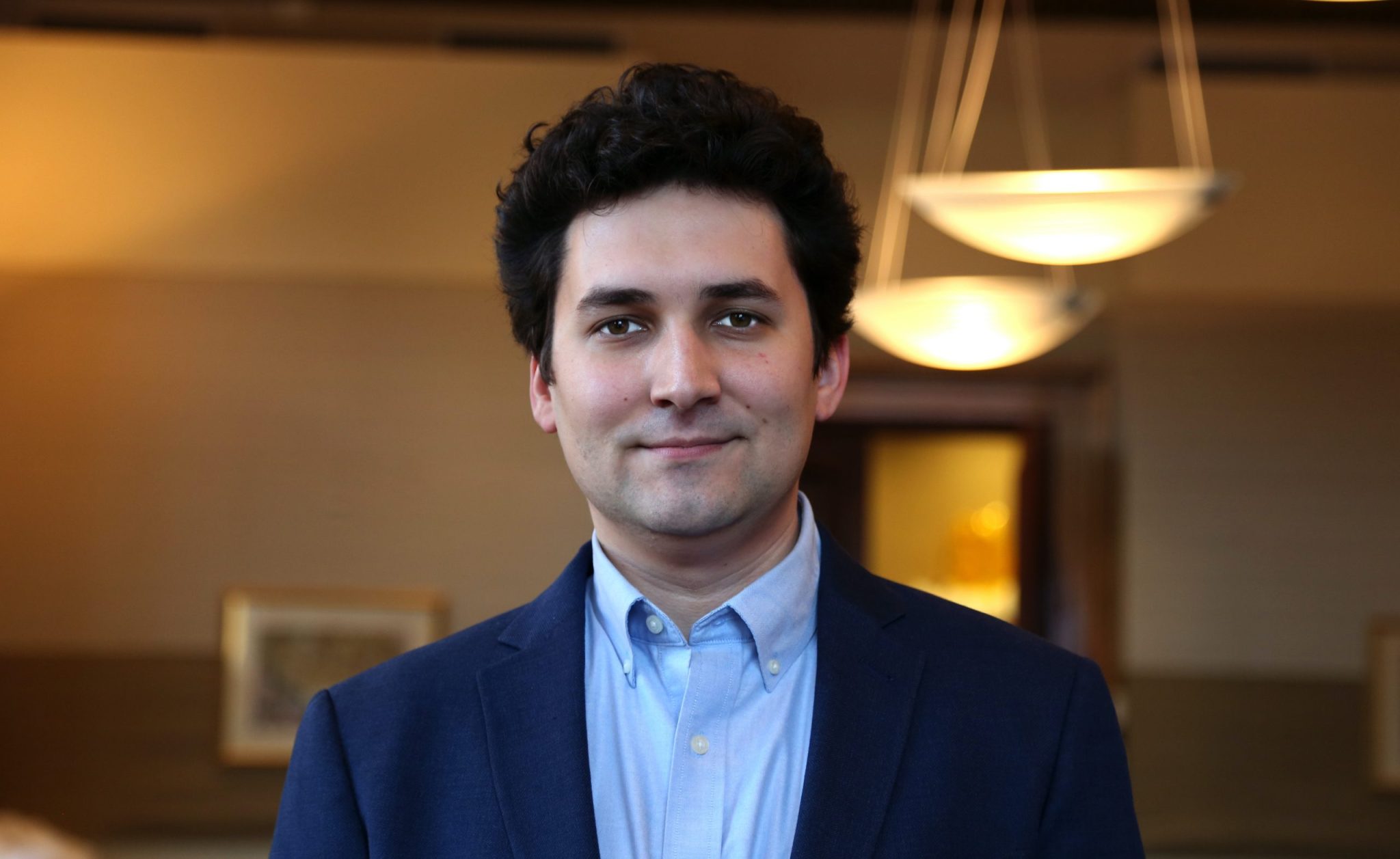The intensification of Israel’s bombardment of Gaza since the October 7 Hamas terrorist attacks has forced liberal democracies to carefully craft a message that balances their support for Israel with growing domestic criticism over civilian casualties and concerns about unrest at home—including but not limited to the potential risk of terrorism. This rhetorical contortionism stands in stark contrast to the confident, nearly unified front the West presented in opposition to Russia’s full-scale invasion of Ukraine. It also has presented an opening for autocratic regimes. Though they face their own domestic and geopolitical risks related to the conflict, Russia, China, and Iran have exploited the West’s moral uncertainty with messages calibrated to enhance their own global standing and influence.
Russia, China, and Iran are not the only significant geopolitical players in the region, but their significant information capabilities make them the best positioned, along with Qatar due to its ownership of Al Jazeera, to shape global discourse around the war. While the tone and tenor of their messaging vis-à-vis the conflict differs—Iran unsurprisingly has been the most vocal in its support of Hamas and China the most circumspect—it is clear, based on the volume and intensity of their respective messaging campaigns over the past month, that each country has calculated that it stands to benefit from staking out positions in direct opposition to the West. Their push to capitalize on the conflict has played out in an information environment that has become far more hospitable to state-backed propaganda and disinformation over the past year, including but not limited to X’s decision to remove restrictions and labels on state-affiliated propaganda outlets.
Using the newly updated Hamilton 2.0 dashboard, ASD analyzed the respective outputs of state-affiliated accounts from Russia, China, and Iran across multiple social media platforms during the first month of the war. Like the Hamilton 2.0 dashboard, this report only tracks messaging from overt, attributable accounts affiliated with each country, meaning that covert influence campaigns are not within its scope. Still, data from the dashboard shows that the war was the dominant topic on every tracked social media platform (Telegram, YouTube, Facebook, and Instagram) and state media websites of all three monitored countries—including Russia, which mentioned the Israel-Hamas war more than its own war in Ukraine over the past month.
Key Findings
- The messaging from China and Russia varies considerably by platform. China’s tempered response to the conflict in most of its external communications stands in contrast to its more confrontational posture on X, where select “wolf warriors” have shared provocative memes and images—including AI generated content. Russia, meanwhile, has used Telegram to post its most controversial content. This is particularly true of its non-English-language outputs, where Russian-affiliated accounts have referred to Israelis as “genocidal psychopaths” and “fascists” whose cruelty “surpasses Hitler”.
- Unsurprisingly, Russia has sought to link the conflict to Ukraine, arguing that the West is hypocritical for simultaneously supporting Ukraine and Israel, incapable of managing both conflicts, and irresponsible for allegedly arming Hamas with weapons meant for Ukraine. But Iran and, to a lesser degree, China, have also attempted to rhetorically tie the two conflicts together, with Iran’s PressTV publishing an article titled “Israel’s doomed ‘de-Hamasification’ and Russia’s winning ‘de-Nazification”.
- The countries differ in their willingness to directly criticize Israel, with Iran the most forceful in its attacks and China the most cautious. But all three countries have shown a clear desire to blame the conflict on Western—mainly US—policies, thus directing their criticism towards a more familiar and, in some cases, comfortable foe.
- Russia, China, and Iran mentioned Palestine nearly four times as often as Ukraine on Telegram over the past month—an indication of just how central the conflict has become to their external messaging.
- The war has been a boon for Iranian state-backed messaging. Engagement with Iranian posts surged in October compared to September on every monitored platform. On Facebook, for example, posts from state-backed Iranian pages received roughly four and a half times more shares and six times as many comments in October compared to September.
Russia
Key Narratives
While Russian propagandists have tailored narratives to fit the Israel-Hamas conflict, their main talking points are consistent with previous efforts to frame democracies as countries that instigate war, profit from conflict, and support the most heinous actors involved in the fighting. These arguments are designed to drive international support away from democratic causes and to divide democracies internally. In the war between Israel and Hamas, Kremlin-linked accounts have depicted Israeli officials as war criminals, argued that Western states inflamed and are benefitting from the fighting, and claimed that Ukraine is being forgotten by its allies as they divert attention and resources to Israel. This last point, though, is also true of Russian propagandists, who have spent more time over the past month commenting on Israel and Hamas than they have discussing Russia’s own war with Ukraine.
Russian diplomats have called for an immediate ceasefire, pressed for the creation of an independent Palestinian state, criticized Israel’s attacks on civilian targets, and blamed the West for the violence. While Russian officials said that Israel has a right to self-defense, they argued that its attacks on Palestinian civilians were “unacceptable” and created a “true humanitarian disaster”. Diplomats insisted that the violence was the “result of Washington’s long-standing destructive policy” in the region. They claimed that the United States collected “bloodstained revenue” from wars and sought to perpetuate conflicts in the Middle East. Deputy Chairman of Russia’s Security Council Dmitry Medvedev said on Telegram that a US civil war would be needed to get warmongering politicians out of Washington. Russian officials also pushed back on claims that Moscow was helping Hamas by blaming the West for allowing weapons to flow into the hands of terrorists around the world.
While state media did criticize Hamas, they focused the bulk of their attacks on Israel. Vladimir Solovyov, an influential Russian propagandist, said that there was little sympathy for Israel in Russia, and he claimed that Israel was “weak, pampered”, and populated with “hundreds of thousands of cowards”. RT en Espanol correspondent Fiorella Isabel was even more vitriolic, calling Israel and its supporters “genocidal psychopaths” and posting videos that she claimed showed Israelis urinating on Palestinian corpses. (Warning, the hyperlink contains extremely graphic content—discretion is advised). Other state media accounts called Israel a “broken nation morally”, accused it of “ethnic cleansing”, said it was conducting “infanticide masquerading as war”, and argued that “Israeli fascism” might be worse than Nazi Germany.
Kremlin-affiliated media also accused the United States of provoking the Israel-Hamas war and framed Western support for Israel as unpopular among Western audiences. Cristina Martín Jiménez, an RT en Español presenter, argued that the United States was a “failed state… sustained only by its war economy”. She called Hamas’s attack on Israel “very, very convenient” for Washington. Solovyov claimed that US taxpayer money was funneled to Hamas, while various state media outlets said that Hamas had obtained US weapons intended to be used by Ukraine. George Galloway, a former UK parliamentarian turned Sputnik host, labeled Western backers of Israel the “Coalition of the Killing”. Kremlin-affiliated accounts also argued that the West is hypocritical for tolerating Israel’s degradation of civilian infrastructure while condemning similar behavior from Russia. Moscow-funded outlets showed pro-Palestinian protests around the world, including in Washington DC, Athens, Rome, and several German cities.
Kremlin-backed outlets also argued that the United States’ attention and resources would be diverted from Ukraine to Israel. Galloway posted, “Ukraine is so last year!” RT shared memes of US corporations hugging Ukraine while looking askance at Israel. The outlet also amplified news that Washington was redirecting artillery shells intended for Ukraine to Israel, and it asked “how the US could arm two countries for war, when they were struggling to arm one?” Moreover, state media said Ukrainian President Volodymyr Zelenskyy was worried about Israel taking Western attention away from Ukraine. They also pointedly noted that Israel had turned down a chance to host Zelenskyy.
By the Numbers
Over the past month, from October 7 to November 6, Russian propagandists have shifted their attention away from Russia’s war of choice with Ukraine and towards the conflict between Israel and Hamas. This trend can be seen across multiple social media platforms. After Russia itself, Ukraine and the United States have generally been the second and third most mentioned countries by Kremlin-linked accounts since late 2021. However, in the month since Hamas touched off a war with Israel, Palestine and Israel have become the second and third most mentioned countries by monitored Russian propaganda accounts on Facebook and Instagram, pushing Ukraine and the United States to fourth and fifth. On Telegram, Palestine is second, Ukraine is third, Israel is fourth, and the United States is fifth.
In addition, three of the five most frequently used key phrases on Telegram and Facebook were related to the Israel-Hamas war. The same was true on Instagram when one filters out terms promoted by Sputnik Brazil, which skewed the data by posting roughly five times more often than any other state media account.
Monitored Russian accounts generated a huge amount of engagement through Israel-Hamas-related posts. On Telegram, Kremlin-linked channels posted about the war around 9,000 times in the past month. Those posts have been viewed roughly 865 million times and prompted around 8 million reactions. The number of reactions would likely be much higher if RIA Novosti, which has 3 million subscribers, allowed users to react to its posts. On Facebook, tracked Kremlin-affiliated pages posted about the war around 7,000 times, which accumulated 976,000 reactions, 181,000 comments, and 134,000 shares. There were around 850 Instagram posts about the conflict, which generated more than 600,000 likes and 65,000 comments.
China
Key Narratives
China has attempted to position itself as sympathetic to the plight of Palestinians while striking a moderate tone in its messaging, stressing the need for both sides to respect international law and avoid civilian casualties. Though this approach in many ways mirrors China’s “pro-Russian neutrality” in Ukraine, China’s aversion to Islamic terrorism and its complicated interests in the Middle East have, for the most part, led to a more measured response than was evident in the aftermath of Russia’s invasion of Ukraine, where its allegiance is far less subtle.
While China has generally avoided direct condemnation of Israel, its pro-Palestinian stance has been evidenced as much, if not more, by what it leaves out of its coverage as by what it verbalizes. One example is China’s coverage of the conflict through its various CGTN outlets on YouTube.
On October 7, the day of the Hamas terror attack in Israel, CGTN’s English-language channel did not cover the terror attacks, posting instead a short video that only mentioned rockets fired from Gaza into Israel and a single death, along with 15 wounded. Over the next several days, CGTN’s coverage focused far more on Israeli airstrikes and the suffering of Palestinian civilians than the attacks that instigated Israel’s response. Few segments provided footage of the October 7 attack, and those that did, included assurances from a Hamas spokesperson that its “military operation” was conducted “in accordance with international law” and worries from an elderly Palestinian woman that Israel’s retaliatory strikes would “wipe it off the face of the earth”. On its channels targeting audiences in the Global South, CGTN’s coverage was even more slanted. CGTN Africa’s YouTube channel, for example, did not post any footage of the Hamas attack in the days after October 7, focusing instead on the Israeli response. CGTN Arabic posted two segments featuring statements from a Hamas spokesperson who attacked Israeli “crimes and aggression” as well as “American cover and support”.
The focus on the alleged malign role of the United States in the conflict was a regular feature in China’s messaging throughout October. Nationalist tabloid the Global Times was particularly scathing in its assessment of the role of the United States, claiming that the US “bears responsibility for the resurgence of the Israel-Palestine conflict”, that its “biased stance risks undermining efforts to defuse Israel-Gaza tension”, and that its opposition to “China’s peace mission…exposed its warmongering nature”. The latter piece was republished, verbatim, by Russian state media outlet Sputnik News, highlighting the narrative convergence between the two countries.
The focus on the role of the United States was juxtaposed with the supposedly constructive role played by China. Chinese diplomats in countries like Sudan, Mexico, and the Philippines, as well as state media widely relayed the result of the UN General Assembly’s vote on a resolution co-sponsored by China and opposed by Israel and several of its allies that called for “an immediate humanitarian truce”. The MFA also justified the Sino-Russian veto of a US-drafted Security Council resolution in late October that condemned the October 7 attacks while calling for humanitarian aid to Gaza by claiming that China’s veto was grounded in “Arab countries” sentiment, with the UAE also being named as having opposed the US resolution. Chinese messaging frequently pointed to the support Beijing received from Arab countries when justifying its stance on the conflict, providing English readouts of foreign minister Wang Yi’s conversations with regional powers like Iran, Saudi Arabia, and Turkey, while conversations with US officials were only published in Chinese.
Critically, our analysis of China’s messaging does not include a systematic examination of official Chinese posts on X, due to X’s decision to remove API access for academic researchers. However, a manual review of Chinese state media and diplomats on X shows that their posts there were more abrasive and openly anti-Israeli than their output on other social media platforms. For instance, the MFA’s supposedly neutral calls for Israel to exercise restraint took on a different meaning when juxtaposed against pictures of bloodied, crying children, as was the case in a tweet by Deputy Foreign Minister Hua Chunying. The Chinese embassy in France resorted to similar imagery to portray military personnel – presumably Israeli—threatening terrified children.
Chinese content on X also was more explicitly anti-Western than its messaging on other platforms. The Chinese consul general in Osaka, a noted “wolf warrior”, posted an image showing the United States, EU, Japan, Ukraine, and other Western allies preparing to attack a lone Palestinian soldier. The same day, he also posted an AI-generated image portraying Palestine as an innocent baby about to be eaten at a dining table decorated with Israeli, UK, and US flags. The Chinese embassy in France and Kenya posted variations on the theme that US vetoes in the UN were enabling the killing of innocent civilians in Gaza.
Finally, some Chinese accounts on X argued that Western democracies’ support for Israel damaged the credibility of their condemnation of China’s repression of its Uygur minority in Xinjiang. The Chinese embassy in France published a caption-less picture contrasting Xinjiang’s supposedly prosperous capital with a destroyed Gaza. The Chinese ambassador to Colombia posted a similar image with a more explicit indictment of Western countries’ allegations of genocide in Xinjiang. The Global Times’ X account also replied to a post by the British Foreign Secretary denouncing China’s policies in Xinjiang by calling out “UK politicians [who] turn a blind eye to the deaths of civilians in Gaza”.
By the Numbers
Over the first month of the war, Chinese diplomatic and state media accounts on all platforms monitored on Hamilton 2.0 devoted a significant amount of coverage to the situation in Israel and Palestine. Between October 7 and November 6, 2023, Israel and Palestine were the third and fourth most mentioned countries by monitored Chinese accounts on Facebook and Instagram. On YouTube and Telegram, only China was mentioned more than Israel and Palestine.
On all monitored platforms, “Hamas” was the most frequent key phrase in Chinese state-backed social media content mentioning Israel or Palestine. However, there was a noticeable discrepancy between state media and diplomatic content. On Facebook, for example, Hamas was rarely mentioned by pages associated with Chinese embassies or consulates. This reflected the approach of the Ministry of Foreign Affairs, whose spokespeople took great care to avoid condemning Hamas, despite repeated entreaties from various media outlets. MFA spokespeople, in fact, did not mention the terrorist organization by name between October 7 and November 6, 2023.
Iran
Key Narratives
The most salient theme repeated in Iranian state media over the past month was that Gazan civilians have endured disproportionate suffering as a result of Israel’s response to the October 7 terror attacks. This included stories of Palestinian families whose lives have been shattered by Israeli strikes on Gaza, with many of those stories focusing on the suffering of Gaza’s most innocent victims: young children. These stories have generated substantial engagement and understandable sympathy from hundreds of thousands of users.
The second most prevalent theme among Iran-backed media sources in October was the alleged inhumanity of Israelis. This included heavy editorial coverage accusing Israel of being the aggressor, and legitimizing the Hamas attack as justified “resistance” to the occupation of Gaza. But a major focus was also on the perceived cruelty of Israeli civilians, including many stories accusing Israeli civilians of celebrating the suffering of Gazans.
A further narrative pushed by Iranian sources was that Israel is internally divided, and that the Western world is inconsistent in its support. This included regularly featuring iconoclastic anti-Zionist Jews who favor an end to the Jewish state. It also featured Western politicians critical of Israel, especially Jeremy Corbyn, the former leader of the UK Labour Party.
Faced with the public perception that Iran abandoned Palestine after the October 7 attacks, Iranian state media has sought to emphasize how Iran is still supporting the Palestinian struggle. This emphasis included focusing on the work Iran is doing in other countries, including Iraq, Syria, and Jordan to mobilize support for Palestine, as well as the possibility of expanding the war to new fronts. Iranian sources have also sought to highlight examples of Hamas’ reasonableness in its negotiations with Israel and the global community as it works to undo the reputational harm from its attack. Iran has also spread doubt and misinformation about key events during the conflict, including the claim that Israel bombed the Al-Alhi hospital, despite evidence to the contrary.
Iranian state media has also sought to tie Israel and Ukraine together rhetorically, as both are strategically aligned against Iran. One PressTV editorial, titled “Israel’s doomed ‘de-Hamasification’ and Russia’s winning ‘de-Nazification’”, suggested that “Russia’s war, unlike the war of the Israeli war, is not imperialist in nature.” This is in keeping with past English-language messaging from Iran, which employed antisemitic conspiracy theories to cast Ukrainian nationalism as an early Zionist experiment.
By the Numbers
Iran’s posts across social media platforms have received a significant boost from the Israel-Hamas war. In September, the month before the terror attack, monitored Iranian state media accounts on Telegram produced approximately 28,000 posts, which received 104 million views and 668,000 reactions. For the month of October, their output increased to 41,000 posts, which received roughly 150 million views and over 1 million reactions. This represents a nearly 50% increase across the board, nearly all of it coming after the October 7 attacks.
For Iranian officials on Telegram, the jump in engagement was even more stark: In September, Iranian government and diplomatic accounts saw 1.1 million views and only 7,000 reactions. For October, government accounts received nearly 2 million views and over 15,000 reactions.
On Facebook, where Iran’s presence is more limited due to platform restrictions, the shift from September to October was also dramatic. In each month, Iran-linked accounts made approximately 1,000 posts, but in September those posts received 9,000 shares and 6,000 comments, while in October they received 42,000 shares and 36,000 comments. In both cases, the engagement was driven by Nexo Latino, Iran’s Spanish-language propaganda outfit. A similar shift was evident on Instagram, where regime-linked accounts made approximately 3,000 posts in both months but generated 3 million more likes in October compared to September.
In September, Iranian regime-linked accounts mentioned Iran on Telegram 11,000 times, which was nearly three times as often as Saudi Arabia and the United States, the second and third most frequently mentioned countries. Israel was only mentioned 1,200 times and Palestine 1,000 times, making them the sixth and seventh most mentioned countries, respectively. In October, Palestine shot to the top of the list with nearly 21,000 mentions and Israel was mentioned 11,000 times, representing a roughly 2100% and 830% increase respectively. Iran itself was crowded out of its own propaganda, falling to third place with only 8,900 mentions.
Conclusion
In the weeks and months after Russia’s unprovoked invasion of Ukraine, autocratic messengers struggled to find a message that resonated with global audiences. In the first month of the Israel-Hamas war, Russia, China, and Iran have encountered far more favorable winds, as evidenced by the fact that all three countries have made the conflict their top messaging priority over the past month—including Russia, despite still being embroiled in a war of its own.
The Israel-Hamas war has provided an opportunity for autocrats to claim the moral high ground, positioning themselves as an alternative to alleged Western-backed oppression, hypocrisy, and warmongering. By linking the conflict to the West, each state has clearly attempted to focus its criticism on Western nations, particularly the United States, and in some cases far more explicitly than Israel. This has allowed them to stake out both a familiar position and one that, judging by their strong engagement numbers over the past month, resonates with many global audiences.
Check out the Hamilton 2.0 Dashboard!








